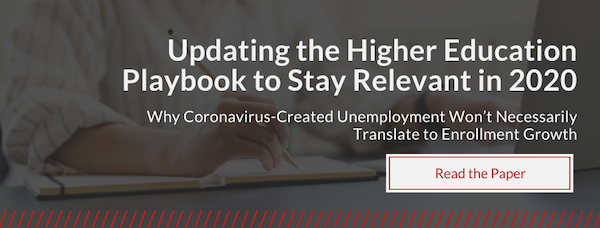Published on
The COVID-19 Wake-up Call: Instructional Designers are Key to Creating Accessible and Inclusive Learning Models

The role of the instructional designer is often misunderstood or, perhaps, not understood at all. In the wake of COVID-19, the abrupt shift online left many instructors scrambling to figure out how to teach students digitally. Suddenly, instructional designers became very popular; their uniquely positioned skillset that comprises the knowledge of technology to support distance learning and the knowledge of effective pedagogy for successful learning outcomes.
To overcome the challenges of distance learning during the pandemic, higher education must look to instructional designers (ID) to develop new, accessible distance learning models and ensure equity and inclusion in learning experience design.
As the world is taking a collective crash course in remote and online teaching, we are also looking at teaching and learning models for the future. One such model is the hybrid flexible or “HyFlex” model, which is gaining steam in response to the global pandemic. As indicated by its name, it is a highly flexible model that allows students to choose where and how they receive their learning experience. This option includes teaching and learning in the traditional campus immersion (in-classroom) setting, in a remote setting during class time (synchronously), and asynchronously (distance) for those who may not be able to attend either session at the regular time.
Learners can also move between modalities, from being present in the classroom one day to joining via Zoom the next day and catching the video recording on another–all in a seamless learning experience. This mix of modalities is similar to models like the “flipped classroom” or active learning, where time spent together as a group needs to be carefully designed so that students experience student-to-student interactions effectively. This also means the end of the 60- or 90-minute lecture, which will lead to more deliberate and strategic re-evaluations of how we teach to best support our students.
COVID-19 has disproportionately impacted Black communities in what many call a “double pandemic” as it has compounded the existing structural inequities in our country. In terms of instructional design, we must dismantle the oppressive systems in place to create more equitable learning experiences. Instructional designers can take a lead role in working with faculty at the outset of course development conversations to make sure that digital learning experiences serve all learners. Practical applications for doing so include but are certainly not limited to:
Equality vs. equity
This practice prompts faculty to think about equality vs. equity and the privileges they are teaching from. For example, having everyone turn on their cameras for Zoom may feel like equality but can bring forth several inequities like bandwidth, safety concerns and students comparing each other’s surroundings.
Look at course material
Evaluate course materials for who is authoring them, who is featured in images, and whose stories are being told to ensure students are able to see themselves in the course content (and not just as a diversity add-on).
Build and know your community
Encourage faculty to build community. Taking the time to know something about each student unrelated to the course, and reaching out early and often to counsel students who may be experiencing challenges with distance learning are important ways to show support and foster student success in what, for many, is a new modality.
Invest
We need to take it upon ourselves, as instructional designers, to invest in resources to learn how to create inclusive courses. CORA Learning is a great place to get that journey started.
With the increasing need to create quality digital courses at rapid speed and scale as we navigate COVID-19, the practice of instructional design will further establish itself as a critical component of quality learning experiences. From overhauling systems to increasing access, to developing new models for an ever-changing modality, instructional designers must continue to innovate quickly to meet faculty and students needs to create enriching, accessible and inclusive learning experiences to ensure student success.
Disclaimer: Embedded links in articles don’t represent author endorsement, but aim to provide readers with additional context and service.
Author Perspective: Administrator




